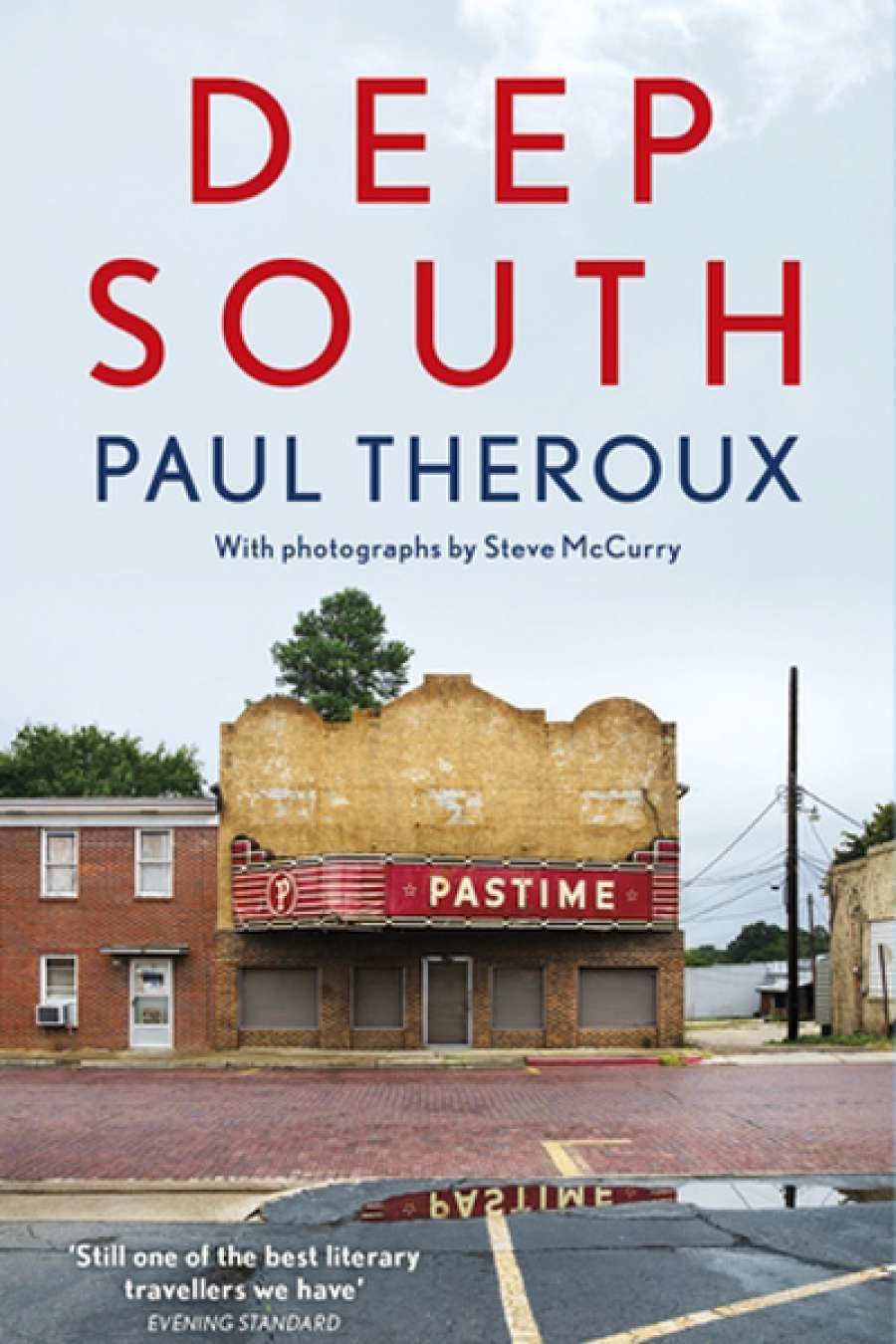
- Free Article: No
- Contents Category: United States
- Custom Article Title: Kevin Rabalais reviews 'Deep South' by Paul Theroux
- Review Article: Yes
- Online Only: No
- Book 1 Title: Deep South
- Book 1 Subtitle: Four Seasons on back roads
- Book 1 Biblio: Hamish Hamilton, $34.99 pb, 441 pp, 9780241146736
One impetus for travelling south stems from Theroux's curiosity about the notion that runs through much of Southern literature, and also through the Southern sensibility: the past and present are not separate entities but a mingling spirit that permeates the essence of daily life. Travellers to the Deep South notice this immediately in the crumbling buildings that – for reasons of neglect and, more often, economics – give the region its so-called Gothic aura, which Faulkner describes in Requiem for a Nun: 'The past is never dead. It's not even past.' What Theroux discovers, he writes, is 'utterly unlike the North, or anywhere in the world I'd travelled'.
While Naipaul visited cities, Theroux seeks back roads in 'the flyspeck towns' of 'the warm green states'. Beginning in 2012, he made four trips to the South over as many seasons. Despite a lifetime of travel, he finds continual surprise. He writes, for instance, that, while Indians and Africans have become 'more and more familiar to me', Southerners remain foreign.
I am not speaking about their common humanity but their circumstances. Many Americans were just as poor as many Africans, or as confined in rural communities as many Indians; they were as remote from anyone caring about them, too, without access to decent housing or medical care; and there were portions of America, especially in the rural South, that resembled what is often thought of as the Third World.
There are Third Worlds within the First World, and Theroux pursues them. In the Unites States (with its population of well over 300 million), you are likely to discover whatever you hunt, including exemplars of all the stereotypes. Theroux seeks the characteristics of the Deep South, this country within a country, but his Northern temperament (read: ingrained prejudice) becomes increasingly clear through a repetitive agenda. To the exclusion of many other places and types of people, he visits numerous gun shows. He talks to born-again Christians and groups of the unbookish, who don't recognise his place in the world of letters. He does better when he focuses on individuals, many of them impoverished. 'These poor folk are poorer in their way ... and less able to manage and more hopeless than many people I had travelled among in distressed parts of Africa and Asia. Living in the buried hinterland, in fractured communities and dying towns and on the sidelines, they exist in obscurity.'
'His occasionally egocentric persona and often acute observations as an outsider in exotic lands have made him one of the most distinct voices in contemporary travel writing'
While Theroux's decades of travel fuel an array of analogies and comparisons, his white-male-Northern disposition prevents him from understanding a faux pas (and its implications) when he arrives unapologetically late for a meeting with an African American woman in Alabama, furnace of the Civil Rights Movement. 'The woman was offended,' he writes. 'What I took to be the easygoing mood of the South had deluded me. It had never occurred to me that I would be perceived as entitled to be late because I happened to be white.'
 Paul Theroux (photograph by William Furniss)
Paul Theroux (photograph by William Furniss)
In the South, everything is about race. Theroux's lack of empathy here and elsewhere baffles the reader. In comparison, Naipaul displays a greater identification with his subjects, and, for that reason, moves closer to an understanding of the area.
For much of this book (not among his best), Theroux looks for the stereotypes. Unsurprisingly, he finds them. His time among subcultures prevents Deep South from revealing the diversities of a region that stands in severe contrast – and often in defiance – to what most foreigners think of as America. 'If anything,' Theroux writes, 'much of it was sliding backward, the past persisting ...' The latter will sound familiar to anyone who saw the first season of HBO's series True Detective, filmed and set in south Louisiana.
Deep South works best on those rare occasions when Theroux moves beyond the surprise of finding differences in these travels. He would do better to return and attempt to unearth the cultural and historical riches that make the region distinct rather than a typecast place that complies with his ideas.


Comments powered by CComment